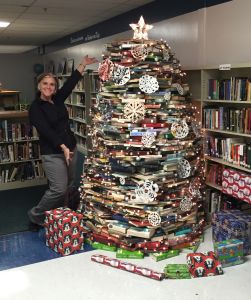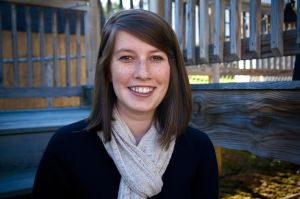By Lesley McCullough McCallister
Last summer at Read Aloud West Virginia’s annual conference, county board members and coordinators networked and shared best practices regarding ways to introduce children to the love of reading. A direct result of those collaborative conversations: Snuggle and Read events are expanding throughout the state. In these sessions, young children, along with their parents, are encouraged to snuggle up under a cozy blanket and enjoy a new book together.
The simple idea to encourage the love of reading with great books and comfy blankets has spread like wildfire in recent months as Snuggle and Read events were held in Cabell, Jackson, Mercer, Nicholas, Pocahontas and Tucker counties this spring.
Jackson County alone has held eight such events, one at each of the seven elementary schools in the county and the public library, reaching more than 200 students since March.
“Statistics show that less than twenty percent of parents are reading to their children,” said Cheryl Miller, retired Ripley Elementary kindergarten teacher and Snuggle and Read coordinator for Read Aloud of Jackson County. “This is alarming, so we were looking for new ways to promote and encourage literacy within the family.”
Miller noted parents often ask teachers, “What can I do to help my child?” Truly, one of the simplest things parents can do is read to them. Snuggle and Read events empower parents by modeling techniques that make reading together a fun experience for both parent and child.
Miller added, “We knew we were on to something because at the end of each event, someone always asked when the next Snuggle and Read event would be held.”
At a Snuggle and Read event that coincided with Valentine’s Day in Cabell County, volunteers from Community of Grace United Methodist Church and Girls Scouts Troop #1174 read to the students at Highlawn Elementary in Huntington and distributed 300 books and blankets for students to take home and share with their families.
At the end of February, Tucker Valley Elementary Middle School hosted a Snuggle and Read Family Night, where the parents and children made no-sew blankets to be used during their snuggly family reading time and picked out a book to take home.
Read Aloud West Virginia offers the Snuggle and Read program with the generous support of private and public partners in the local county chapters. Toyota Motor Manufacturing of West Virginia, Constellium, Pocahontas County Schools, and the state Title One program, are among the groups who have contributed funds, books and/or materials to make these events possible.
Lesley McCallister is a Read Aloud supporter, volunteer and newsletter contributor and a freelance journalist.
Photos (l-r): A Nicholas County family snuggles and reads about math; a Jackson County S&R workshop with Cheryl Miller (l); and T.C. Clemmons, a tecaher at Highland Elementary in Cabell County, reads a donated book with a student (photo courtesy of Sholten Singer/The Herald-Dispatch).









 individuals from places like Nigeria, Haiti, Spain, New York, Canada, Nepal, California, and India? The answer is that she, like them, was recognized in September in the International Literacy Association’s “30 Under 30” list as an innovative young leader helping to transform literacy world-wide.
individuals from places like Nigeria, Haiti, Spain, New York, Canada, Nepal, California, and India? The answer is that she, like them, was recognized in September in the International Literacy Association’s “30 Under 30” list as an innovative young leader helping to transform literacy world-wide.